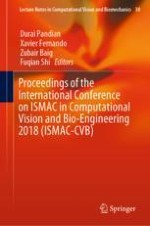These are the proceedings of the International Conference on ISMAC-CVB, held in Palladam, India, in May 2018. The book focuses on research to design new analysis paradigms and computational solutions for quantification of information provided by object recognition, scene understanding of computer vision and different algorithms like convolutional neural networks to allow computers to recognize and detect objects in images with unprecedented accuracy and to even understand the relationships between them.
The proceedings treat the convergence of ISMAC in Computational Vision and Bioengineering technology and includes ideas and techniques like 3D sensing, human visual perception, scene understanding, human motion detection and analysis, visualization and graphical data presentation and a very wide range of sensor modalities in terms of surveillance, wearable applications, home automation etc.
ISMAC-CVB is a forum for leading academic scientists, researchers and research scholars to exchange and share their experiences and research results about all aspects of computational vision and bioengineering.
